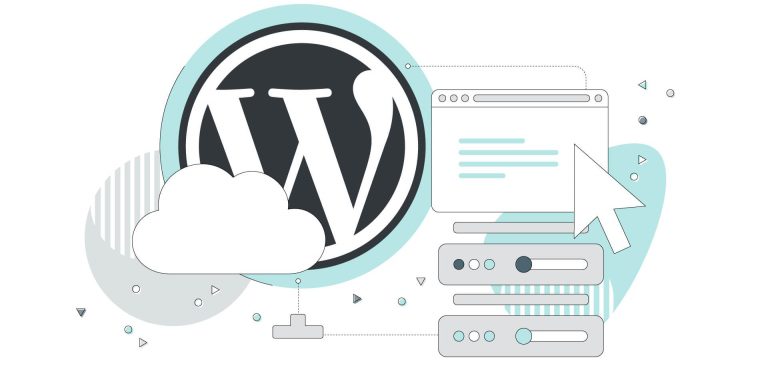On-Page SEO: How to Structure Blog Posts for Google in 2026
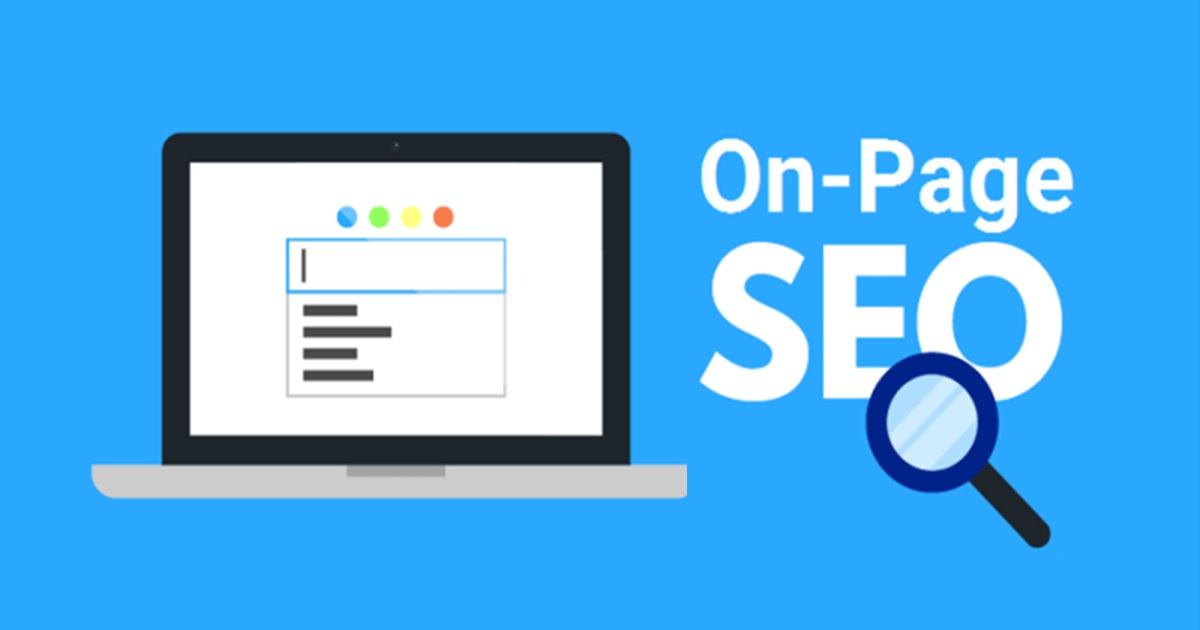
Structure smart, rank higher, dominate search results
Mastering on-page SEO blog structure is what separates bloggers who get traffic from those who don’t, and after watching countless content creators struggle with this exact problem, the patterns are pretty obvious.
Google’s algorithm has gotten incredibly sophisticated at understanding content structure, but most bloggers are still writing like it’s 2010.
The wake-up call usually comes when someone realizes their beautifully written 3,000-word blog post is sitting on page 47 of Google results while a competitor’s shorter, better-structured article is ranking #3.
That moment of frustration is actually the beginning of understanding how search engines really work.
Here’s the thing about on-page SEO blog structure – it’s not just about pleasing robots. When you structure content properly, real humans have a better experience too, which Google absolutely loves and rewards with higher rankings.
Foundation: Header Structure That Google Reads
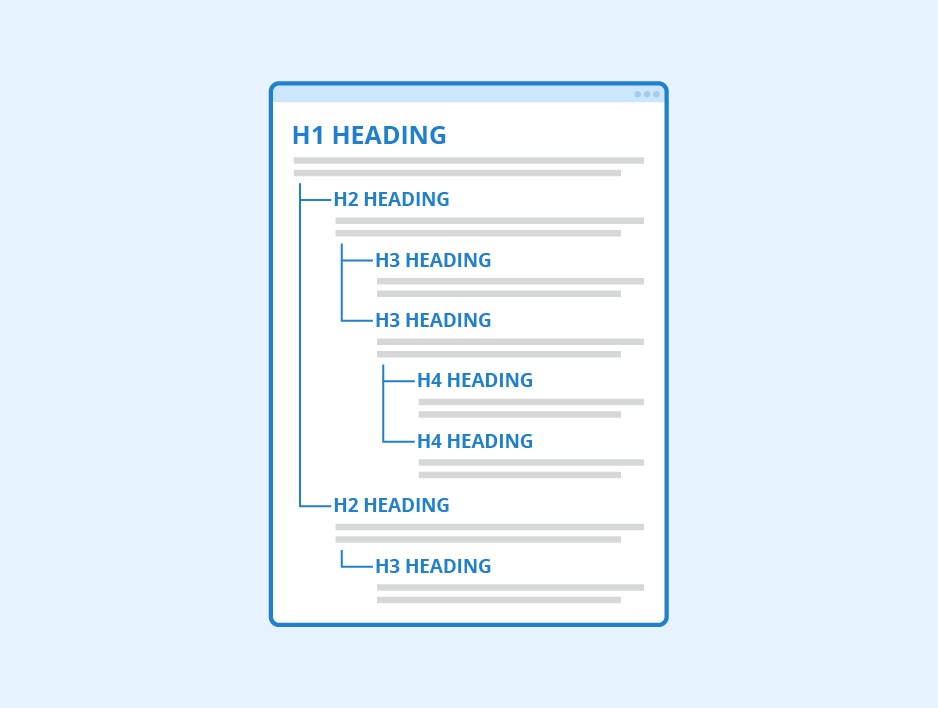
The biggest mistake bloggers make with on-page SEO blog structure is treating headers like afterthoughts instead of the roadmap they actually are.
Your H1 tag is like the title page of a book – it needs to clearly communicate what the entire post is about, and it should include your target keyword naturally.
Only use one H1 per page, and make it count. Something like “Best AI Tools for Blogging 2026” works way better than “Everything You Need to Know AI Tools for Blogging” because it’s specific and includes searchable terms that people actually type into Google.
Your H2s are chapter titles that break up your main topics.
They should follow a logical hierarchy and include semantic keywords related to your main topic. If your post is about sourdough baking, your H2s might cover ingredients, equipment, techniques, and troubleshooting.
H3s and H4s work as subtopics under each main section. Most successful bloggers stick to H1, H2, and H3 tags because going deeper than that usually makes the structure too complicated for both readers and search engines to follow easily.
The golden rule that took me years to figure out: each header should make sense if someone only read the headers and skipped everything else.
That’s actually how many people scan content online, and Google’s crawlers pay special attention to header structure when trying to understand your content.
Keyword Placement Strategy That Works

Keyword stuffing died around 2012, but somehow many bloggers still haven’t gotten the memo about natural keyword placement in their on-page SEO blog structure.
The modern approach focuses on semantic keywords and natural language rather than forcing your exact match keyword into every paragraph.
Your target keyword should appear in the first 100 words of your post, ideally in the first sentence if it sounds natural. This immediately signals to both readers and search engines what your content is about. But after that initial placement, focus on variations and related terms.
Instead of repeating “best AI tools for blogging” fifteen times, use variations like “top AI writing tools,” “SEO tools,” and “free SEO optimization tools.”
Google’s natural language processing is sophisticated enough to understand that these are all related concepts.
Long-tail keywords often perform better than short, competitive terms. “How to build your first blog with AI” will usually outrank “building a blog with AI” because it matches specific search intent and faces less competition from major publications.
The sweet spot for keyword density is around 1-2% of your total word count, but honestly, stop counting and start focusing on whether your content sounds natural when read aloud.
If it doesn’t, you’re probably overdoing it.
Content Structure That Keeps Readers Engaged

Google measures user engagement signals like time on page and bounce rate as ranking factors, which means your on-page SEO blog structure needs to keep people actually reading.
The old-school approach of giant walls of text doesn’t work anymore because attention spans have gotten shorter.
Break up long paragraphs into smaller chunks of 2-3 sentences max.
White space is your friend because it makes content easier to scan and digest. Think about how you read content on your phone – if a paragraph takes up the entire screen, most people will bounce.
Use bullet points and numbered lists strategically to present information that’s easy to consume.
Search engines love lists because they’re clear, structured content that often gets featured in snippets. But don’t overuse them – mix lists with regular paragraphs to maintain flow.
Internal linking is crucial for on-page SEO blog structure, but it needs to feel natural and helpful rather than forced. Link to relevant posts when they genuinely add value to what you’re discussing.
A good internal link answers the question “what would be helpful for someone to read next?”
Images break up text and make content more engaging, but they need proper optimization too. Use descriptive file names and alt text that includes relevant keywords without being spammy.
“free-SEO-tools-2026.jpg” is much better than “IMG_28423.jpg” for SEO purposes.
Introduction Formula That Hooks Readers

Your introduction sets the tone for everything that follows, and it’s often what determines whether someone stays on your page or hits the back button.
The most effective on-page SEO blog structure starts with an introduction that immediately addresses the reader’s pain point or question.
Start with a problem statement that your target audience can relate to.
If you’re writing about meal planning, mention the Sunday evening panic of realizing you have no idea what to cook for the week. This creates an immediate connection with readers who’ve experienced the same frustration.
Promise a solution within the first two paragraphs. People need to know that sticking around will actually solve their problem.
Be specific about what they’ll learn – “you’ll discover five meal planning templates that take less than 30 minutes to complete” is way better than “you’ll learn about meal planning.”
Include your target keyword naturally in the introduction, but don’t force it. The keyword should feel like a natural part of explaining what the post covers, not like you shoehorned it in to check an SEO box.

Body Content That Google Loves to Rank

The meat of your content is where the on-page SEO blog structure really makes or breaks your rankings.
Google wants to see comprehensive coverage of topics, which means you need to address the questions your audience is actually asking about your subject.
Use tools like AnswerThePublic or Google’s “People Also Ask” section to identify related questions and topics to cover. This helps create that comprehensive coverage that search engines reward with higher rankings.
If people are searching for “how to start a blog,” they’re probably also wondering about costs, time investment, and monetization strategies.
Structure your main points with clear transitions between sections.
Each major section should feel complete on its own while contributing to the overall narrative of your post. This helps both readers and search engines understand how your ideas connect.
Include specific examples, case studies, or data points whenever possible. “Bloggers who post consistently see 67% more traffic” is much more compelling and shareable than “consistent posting helps with traffic.”
Specific information tends to get linked to more often, which boosts your SEO.
Meta Descriptions and Title Tags That Click

Your title tag and meta description are like your storefront window – they need to convince people to click through from search results.
The best on-page SEO blog structure includes compelling titles that balance keyword inclusion with click appeal.
Title tags should be 50-60 characters to avoid getting cut off in search results. Include your target keyword near the beginning, but make sure the title still sounds natural and compelling.
“SEO Blog Structure: 7 Proven Techniques for Higher Rankings” works better than “How to Structure Blog Posts for SEO Optimization.”
Meta descriptions have about 155-160 characters to sell your content.
Think of them as mini advertisements that need to communicate value quickly. Include your target keyword, but focus more on explaining what benefit readers will get from clicking through.
Numbers and power words tend to increase click-through rates. “Ultimate,” “proven,” “step-by-step,” and specific numbers like “7 techniques” or “15-minute guide” catch attention in crowded search results.
Technical SEO Elements That Matter
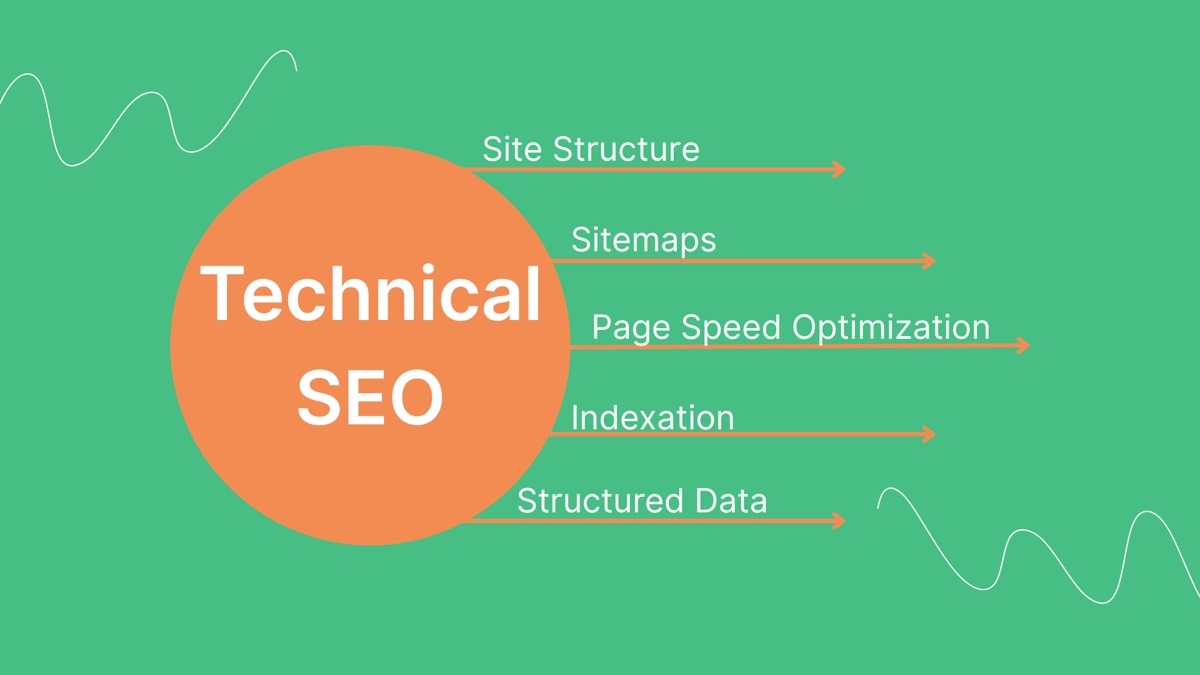
The technical side of on-page SEO blog structure includes elements that readers might not notice, but search engines definitely do. URL structure should be clean and include your target keyword when possible.
“yoursite.com/seo-blog-structure” is much better than “yoursite.com/post-12345.”
Schema markup helps search engines understand your content better and can lead to rich snippets in search results.
Most modern blogging platforms handle basic schema automatically, but you can add specific markup for recipes, reviews, FAQs, and other structured content types.
Page loading speed affects both user experience and rankings. Optimize images, minimize plugins, and choose a reliable hosting provider. Google’s PageSpeed Insights tool will show you specific issues slowing down your site and how to fix them.
For Hosting: I use and recommend WPX Hosting
Mobile optimization isn’t optional anymore since Google uses mobile-first indexing. Test your content on different screen sizes and make sure it’s easy to read and navigate on phones and tablets.
Content Length and Depth Strategy
There’s no magic word count for a perfect on-page SEO blog structure, but depth and comprehensiveness matter more than hitting arbitrary numbers.
A 1,500-word post that thoroughly covers a topic will usually outrank a 3,000-word post that’s full of fluff and repetition.
Cover your topic completely without padding for length.
If you can explain something clearly in 800 words, don’t stretch it to 2,000 words just because you think Google prefers longer content. Quality and relevance beat length every time.
Break longer posts into clear sections with descriptive headers. This makes them easier to scan and helps readers find specific information quickly. It also gives you more opportunities to include semantic keywords naturally throughout your content.
Consider your audience’s intent when planning content depth.
Someone searching “how to change a tire” wants a quick, actionable guide, not a 5,000-word deep dive into automotive history. Match your content depth to search intent for better rankings and user satisfaction.
Internal Linking Strategy for Better Rankings

Strategic internal linking is one of the most underutilized aspects of on-page SEO blog structure, probably because it requires thinking about your content as a connected ecosystem rather than individual posts.
Every piece of content should link to and support other relevant content on your site.
Link to newer posts from older, established content to help new posts gain authority faster.
If you wrote about basic photography techniques last year and just published an advanced lighting guide, linking from the older post helps the new one get discovered and ranked.
Use descriptive anchor text that tells readers and search engines what they’ll find when they click. “Learn more about camera settings” works better than “click here” or “read this post” because it provides context about the linked content.
Create topic clusters by linking related posts together. If you have multiple posts about different aspects of gardening, link them to each other to create a hub of authority around that topic.
This helps establish your site as a comprehensive resource in your niche.
Featured Snippet Optimization Techniques
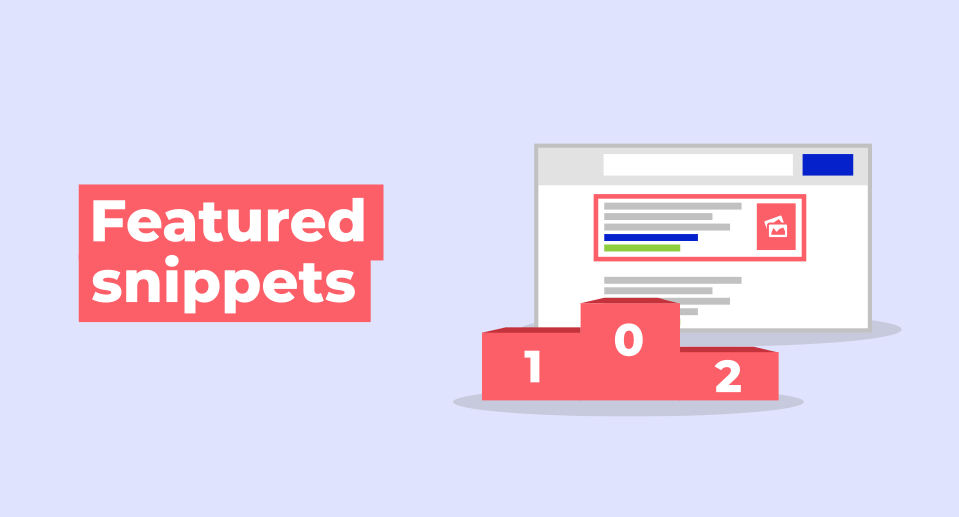
Getting featured in Google’s answer boxes can dramatically increase your traffic, and the right on-page SEO blog structure makes your content more likely to be selected.
Featured snippets typically pull from content that directly answers specific questions with clear, concise information.
Structure answers to common questions in your niche using the question as an H2 or H3 header, followed by a clear, complete answer in the next paragraph. Keep answers between 40-50 words for paragraph snippets, or use numbered lists for step-by-step processes.
Table format works well for comparison content and often gets featured for “versus” searches. Create clean, simple tables comparing features, prices, or specifications when relevant to your topic.
FAQ sections at the end of posts are snippet goldmines because they directly match how people search for information. Include 5-8 frequently asked questions with clear, complete answers.
Content Freshness and Update Strategy 🔄
Google favors fresh, updated content, which means your on-page SEO blog structure should include a strategy for keeping popular posts current. Regularly updating your best-performing content can maintain or improve rankings over time.
Add new sections to evergreen content as trends and information change.
A post about Jetpack tools for bloggers from two years ago should probably include information about newer product features, changes, and bug fixes to stay relevant and useful.
Update statistics, examples, and case studies regularly.
Outdated information hurts credibility and can cause rankings to drop as Google prioritizes more current resources. Set calendar reminders to review and refresh your top-performing posts quarterly.
Consider adding publication dates and “last updated” timestamps to show both readers and search engines that your content is current. This transparency can increase click-through rates and trust signals.
AI Tools for Better On-Page SEO
Modern AI tools can significantly improve your on-page SEO blog structure by identifying optimization opportunities and suggesting improvements.
Tools like Frase AI analyze top-ranking content to recommend keyword variations and content depth for better rankings.
Outranking.io and MarketMuse help identify semantic keywords and content gaps that could improve your rankings. These tools analyze what topics successful competitors cover and suggest additions to make your content more comprehensive.
Grammarly and Hemingway Editor improve readability, which indirectly affects SEO by keeping readers engaged longer. Better readability often correlates with lower bounce rates and longer time on page, both positive ranking signals.
ChatGPT and Claude can help brainstorm header structures, meta descriptions, and internal linking opportunities.
While you shouldn’t rely on AI to write your content, it’s excellent for generating ideas and identifying structural improvements.
Common On-Page SEO Mistakes to Avoid

The biggest mistake in on-page SEO blog structure is optimizing for search engines instead of humans.
Content that feels unnatural or keyword-stuffed will struggle with engagement metrics, which ultimately hurts rankings even if the technical SEO is perfect.
Don’t neglect image optimization just because it seems minor. Large, unoptimized images slow down page loading and hurt user experience. Compress images and use descriptive file names and alt text for better SEO performance.
Avoid thin content that doesn’t fully address the topic.
A 400-word post about “a complete guide to SEO” won’t rank well because it can’t possibly cover the topic comprehensively enough to satisfy search intent.
Stop obsessing over exact keyword density percentages. Focus on natural language and covering the topic thoroughly rather than hitting arbitrary keyword targets that don’t reflect how people actually search and read content.
Measuring Your On-Page SEO Success
Track rankings for your target keywords, but don’t ignore other important metrics like organic traffic growth, time on page, and bounce rate. These engagement signals often predict ranking changes before position tracking tools show movement.
Google Search Console provides invaluable data about which queries bring traffic to your posts and which pages get the most impressions. Use this information to optimize existing content and identify new content opportunities.
Set up goals in Google Analytics to track conversions from organic traffic. Rankings and traffic don’t matter if they’re not converting into subscribers, sales, or whatever action you want visitors to take.
Monitor featured snippet opportunities by tracking when your content appears in position zero. This can drive significant traffic even from lower traditional rankings and often indicates strong topical authority.
Advanced Structure Techniques for Competitive Niches
In highly competitive niches, your on-page SEO blog structure needs to be exceptionally thorough and user-focused to compete with established authorities.
This means going deeper than surface-level coverage and addressing subtopics that competitors might miss.
Create comprehensive resource pages that serve as ultimate guides to specific topics. These pillar pages can rank for multiple related keywords and serve as the hub for internal linking strategies that boost your entire site’s authority.
Use topic modeling to identify semantic relationships between concepts in your niche.
Tools like Frase can help identify related terms that successful competitors include, giving you a roadmap for more comprehensive content coverage.
Consider user-generated content like comments and reviews as part of your content strategy. Active comment sections signal engagement to search engines and can help you identify additional topics to cover in future posts.
Content Promotion and Link Building 📢
A great on-page SEO blog structure means nothing without promotion to get your content discovered and linked to.
Share new posts strategically on social media platforms where your audience is most active, but don’t just drop links – provide context about why the content is valuable.
Reach out to other bloggers and websites in your niche when you publish comprehensive resources that would genuinely benefit their audiences.
Quality backlinks remain one of the strongest ranking factors, and great content structure makes it easier to earn them.
Guest posting on relevant sites can drive traffic back to your well-structured content and build authority in your niche. Focus on platforms with engaged audiences rather than just high domain authority scores.
Read: Writing Reviews for Backlinks 2026: Beneficial or Bullshit?
Email your list when you publish new content, especially updates to popular existing posts. Your existing audience is often the best source of initial engagement signals that can boost new content in search results.
My Partying Shot
Mastering on-page SEO blog structure isn’t about gaming the system – it’s about creating content that serves both search engines and real humans effectively.
When you structure content logically with clear headers, strategic keyword placement, and comprehensive topic coverage, rankings naturally improve because you’re solving problems better than your competitors.
The bloggers who consistently rank well understand that structure is the foundation of everything else that is built. You can have amazing insights and beautiful writing, but if your content isn’t structured for discovery and consumption, it won’t reach the audience it deserves.
Start implementing these on-page SEO blog structure techniques one post at a time rather than trying to overhaul everything at once.
Focus on your highest-traffic posts first because improvements there will have the biggest impact on your overall organic visibility.
Remember that SEO is a long-term game, and structure improvements often take weeks or months to show results in rankings. But when they do, the impact can be dramatic and lasting because well-structured content tends to maintain its rankings better over time.
See you at the next one. Bye for now.
FAQs
How long should my blog posts be for good SEO?
There’s no magic number, but comprehensive coverage matters more than word count. Focus on thoroughly answering your audience’s questions rather than hitting arbitrary length targets.
Most successful posts range from 1,500-3,000 words, but quality beats quantity every time.
How many keywords should I target per blog post?
Focus on one primary keyword and 3-5 related semantic keywords per post.
Trying to target too many unrelated keywords dilutes your content’s focus and confuses search engines about your post’s main topic.
Should I update old blog posts or create new ones?
Update high-performing old posts that could benefit from fresh information or better structure.
Create new posts for entirely different topics or when you want to target new keywords that don’t fit existing content.
How important are meta descriptions for SEO?
Meta descriptions don’t directly affect rankings, but they significantly impact click-through rates from search results.
Better click-through rates can indirectly improve rankings by signaling content relevance to search engines.
What’s the best way to optimize images for SEO?
Use descriptive file names, add alt text that describes the image’s content and context, compress images for faster loading, and include relevant keywords naturally without keyword stuffing.
How do I know if my content structure is working?
Monitor organic traffic growth, average time on page, bounce rate, and keyword rankings.
Tools like Google Search Console and Google Analytics provide insights into how your structured content performs with both search engines and users.

